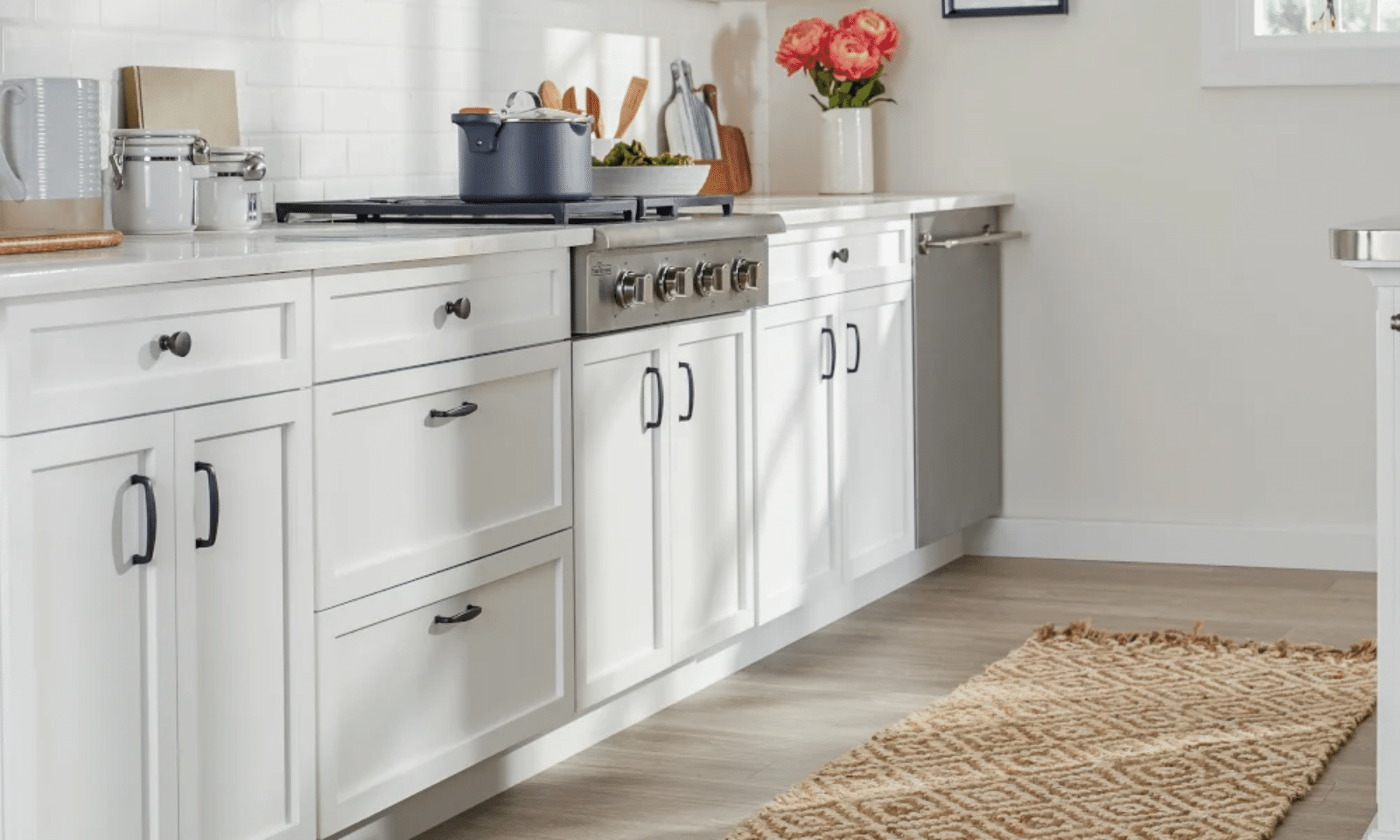Couches
Living
Decor
SHOULD YOU PUT A RUG IN YOUR KITCHEN?
August 24, 2021 2 min read

HOW TO CHOOSE THE BEST RUG FOR YOUR KITCHEN
THE PROS TO RUGS IN THE KITCHEN
Most kitchen floors are finished in tile, stone or wood, which can make then feel cold underfoot. Rugs, runners and carpets add warmth to a space by adding a layer of insulation, the kitchen is no exception from this, making adding a rug to the kitchen such a great idea. Not only do rugs help increase the temperature in a room, but they also act as a sound buffer. In the kitchen you will find numerous noisy appliances which can often overwhelm the space. If you add a small rug or runner to the space it will help to control and reduce the noise.
THE CONS TO RUGS IN THE KITCHEN
As mentioned before, rugs and runners in the kitchen are more prone to food and drink stains and messes as they are placed in the area of the home where the food is prepared. It can also be highlighted that having a rug in the kitchen could potentially pose as a tripping hazard, and so should not be placed in an area of the home that has sharp objects and edges.
NYLON
Nylon is a synthetic material that is the perfect choice for kitchens or bathrooms. Nylon is a strong and durable material, meaning that it can withstand high volumes of traffic without diminishing rapidly. Nylon is also made to resist staining, making it ideal for kitchens where food preparation occurs.
POLYESTER
Polyester is a great material choice for rugs or runners destined for the kitchen as it is highly resistant to fading and staining. In the kitchen there is lots of water and water-based substances that could potentially stain your rug. Luckily, polyester is resistant to water-based stains as it does not easily absorb it. However, this is not the case with oil-based products which can be extremely difficult to remove.
SEAGRASS AND JUTE
Jute and seagrass are beautiful natural fibres that are often used to make is a wonderful natural rugs or baskets. This natural fibre is an excellent option for kitchen rugs or runners as it is hard wearing and resistant to staining. The natural material gives it a warm, inviting feel and adds a different texture to the space.
